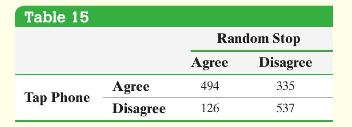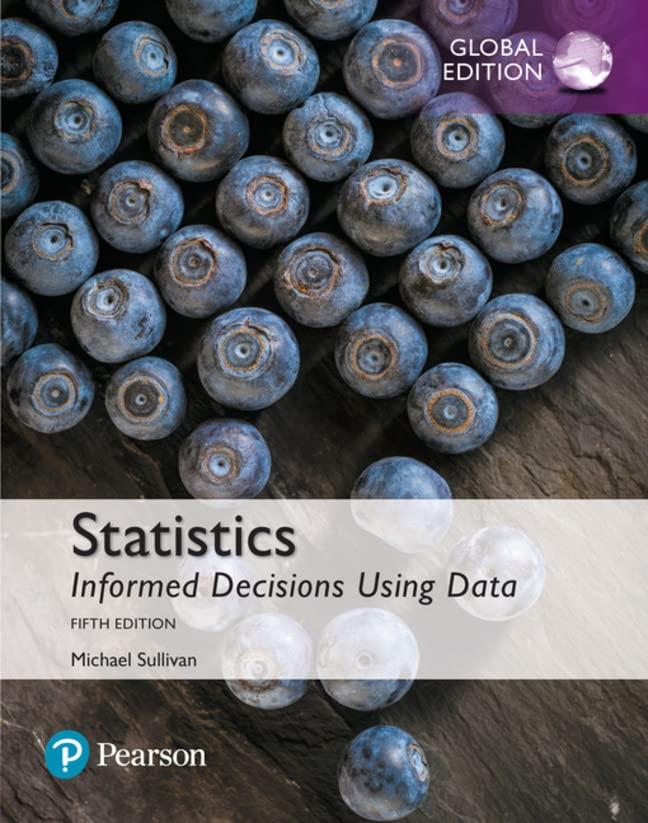A recent General Social Survey asked the following two questions of a random sample of 1492 adult
Question:
A recent General Social Survey asked the following two questions of a random sample of 1492 adult Americans under the hypothetical scenario that the government suspected that a terrorist act was about to happen:
- Do you believe that the authorities should have the right to tap people's telephone conversations?
- Do you believe that the authorities should have the right to stop and search people on the street at random?
The results of the survey are shown in Table 15.

Do the proportion of people who agree with each scenario differ significantly? Use the \(\alpha=0.05\) level of significance.
Approach The sample proportion of individuals who believe that the authorities should be able to tap phones is \(\hat{p}_{T}=\frac{494+335}{1492}=0.556\). The sample proportion of individuals who believe that the authorities should be able to randomly stop and search an individual on the street is \(\hat{p}_{R}=\frac{494+126}{1492}=0.416\). We want to determine whether the difference in sample proportions is due to sampling error or to the fact that the population proportions differ.
The samples are dependent and were obtained randomly. The total number of individuals who agree with one scenario, but disagree with the other, is \(335+126=461\), which is greater than 10 . We can proceed with McNemar's test.
Step by Step Answer:

Statistics Informed Decisions Using Data
ISBN: 9781292157115
5th Global Edition
Authors: Michael Sullivan





